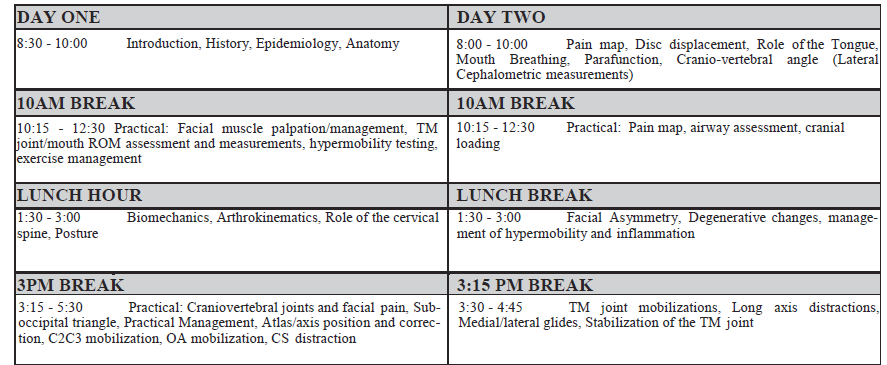This seminar will primarily be focused on displacement of the intra-articular disc of the TMJ but will also cover the role of the subcranial spine in the causation of craniofacial pain and the association between detrimental oral habits (parafunctions) and craniofacial pain. Medial and lateral disc subluxations will be carefully examined, as will disc-condyle and disc-eminence subluxations. The progression of disc subluxation and other intra-articular pathology will be demonstrated by the use of clinical
-
07 June1 day, 08:30 AM - 04:45 PM
-
20 June1 day, 08:30 AM - 11:30 PM
Description
Learning Objectives:
At the completion of this seminar, the participant should be able to:
• Explain the concept of progression of intracapsular temporomandibular joint (TMJ) disc pathology as an initial stage of dysfunction.
• Discuss how a medial or lateral disc can progress to an anterior disc subluxation.
• Predict the effect of oral bad habits in children and adults.
• Describe the process of craniomandibular parafunction (teeth grinding) as a cause of micro repetitive trauma.
• Explain the loaded gliding of the TMJ with systemic joint laxity as a cause of progressive joint disc pathology and degenerative joint disease.
• Apply examination and treatment techniques to soft and hard tissues of the maxillofacial region with special emphasis on proper force and direction to avoid injury.
• Explain the major cause of condylar height loss and consequential facial asymmetry.
• Identify the signs and symptoms of vascular irritation for the TMJ.
• Apply manual and muscular techniques for disc subluxations.
• Discuss the use of removable interocclusal appliances for joint stabilization.

Prerequisites
Physical Therapists, no other prerequisites.

